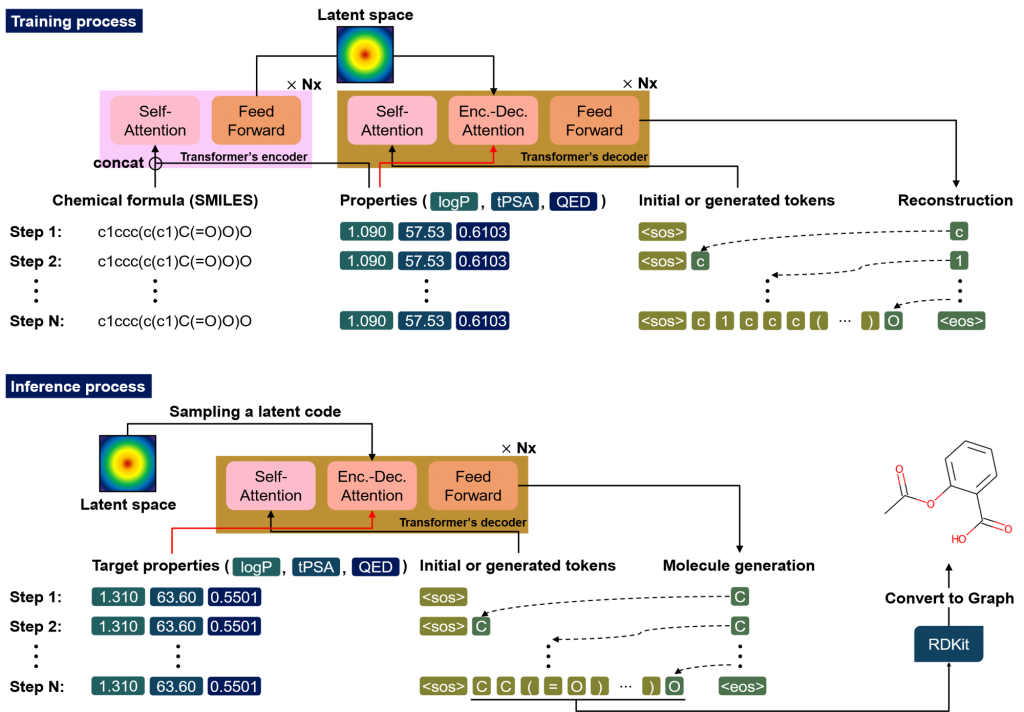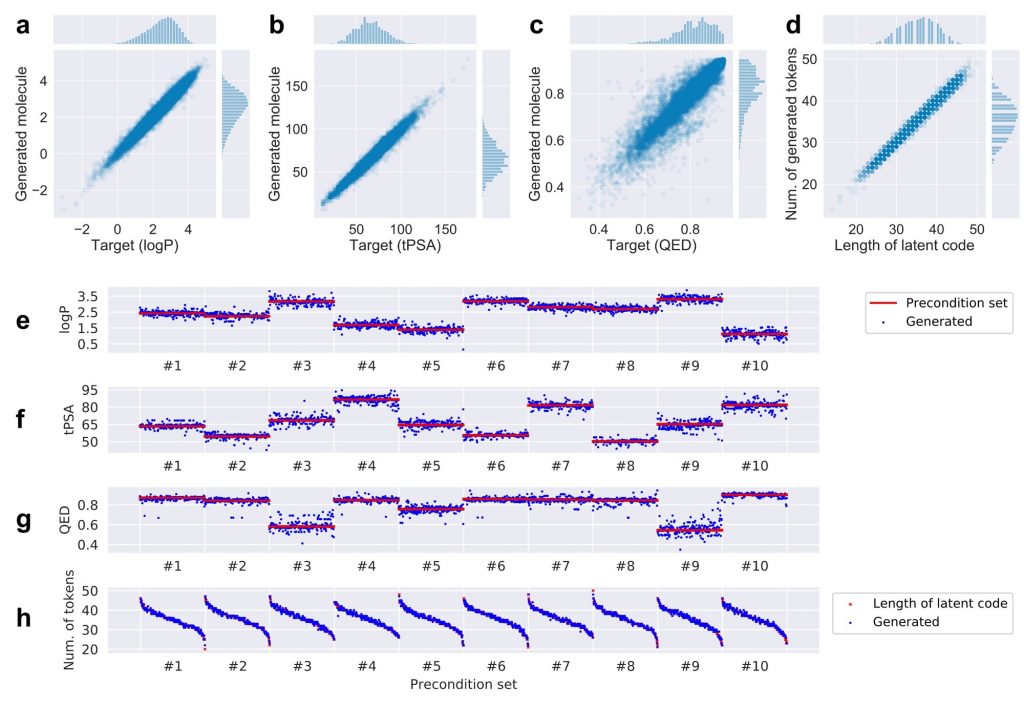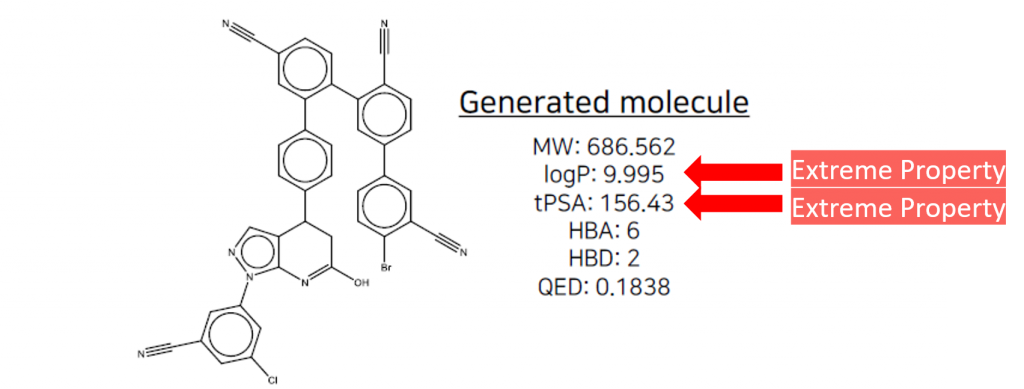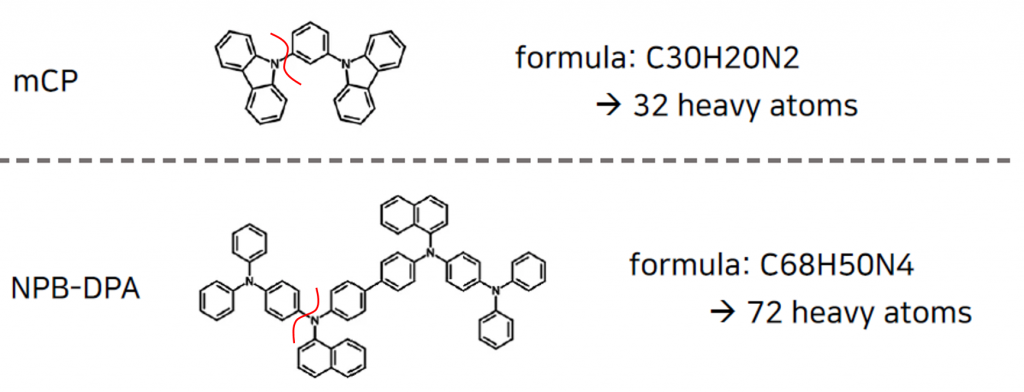Autonomous Materials Discovery via AI/ML
Autonomous Materials Discovery is a research field that searches for new materials that fit specific purposes. The difficulty of materials discovery is that the chemical space is very vast; the number of organic molecules less than 500 daltons exceeds 10^60 and discovering materials by conventional approaches (expert knowledge or intuition, and modeling and simulation) requires considerable time and cost. In recent years, Artificial Intelligence (AI) and Machine Learning (ML) have been utilized to accelerate material discovery process and to enable it autonomously and automatically. We are interested in three methodologies for Autonomous Materials Discovery via AI/ML: Quantitative Structure Property Relationships (QSPRs), Inverse Molecular Design, and Reaction Path Planning.

J. Chem. Inf. Model.
Vol. 61, Iss. 12 (2021)
(Supplementary Cover)
- Inverse molecular design via generative model: Generative Chemical Transformer (GCT)
GCT creates new molecules that meet multiple desired conditions based on a deep understanding of chemical language. The features of GCT are summarized as follows:
- (1) The attention mechanism in GCT helps to deeply understand the geometric structure of molecules beyond the limitations of chemical language semantic discontinuity resulting from converting a non-Hamiltonian molecular graph to a one-dimensional string by paying sparse attention to chemical formulas.
- A deep understanding of chemical language makes the generated SMILES strings (2) satisfy the syntax of SMILES language, (3) satisfy the chemical rules, and (4) are realistic.
- The conditional variational generator in GCT makes the generated molecules (5) satisfy multiple target properties simultaneously and (6) vary.
- The autoencoder structure of GCT (7) makes the molecular size controllable.
- GCT (8) creates de novo molecules that have never been seen in the training process, and (9) creates a molecule in hundreds of milliseconds.


- [In Progress] Inverse molecular design via reinforcement learning: discovering materials with extreme properties

- [In Progress] Quantitative Structure Property Relationships (QSPR): molecular stability of OLED and Li-ion Battery
